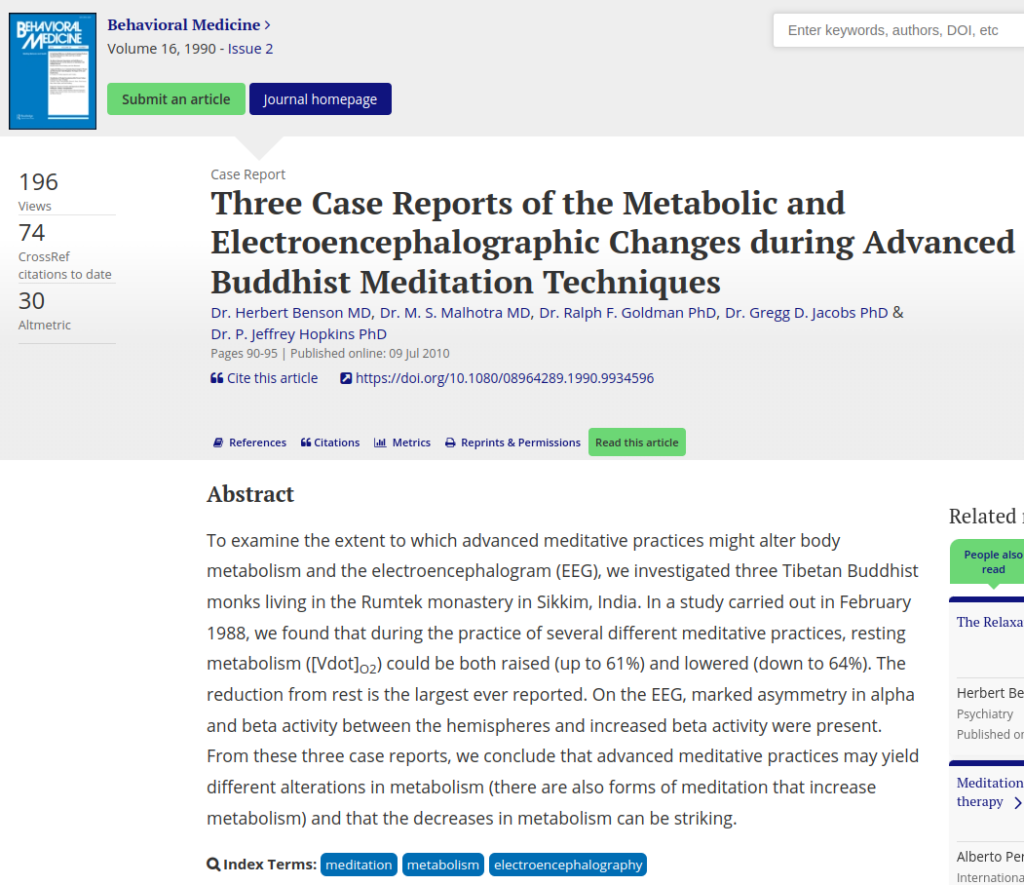To examine the extent to which advanced meditative practices might alter body metabolism and the electroencephalogram (EEG), we investigated three Tibetan Buddhist monks living in the Rumtek monastery in Sikkim, India. In a study carried out in February 1988, we found that during the practice of several different meditative practices, resting metabolism ([Vdot]O2) could be both raised (up to 61%) and lowered (down to 64%). The reduction from rest is the largest ever reported. On the EEG, marked asymmetry in alpha and beta activity between the hemispheres and increased beta activity were present. From these three case reports, we conclude that advanced meditative practices may yield different alterations in metabolism (there are also forms of meditation that increase metabolism) and that the decreases in metabolism can be striking.
Three Case Reports of the Metabolic and Electroencephalographic Changes during Advanced Buddhist Meditation Techniques
Publication
Behavioral Medicine
Volume 16, Issue 2
Abstract
Related Listings
Journal
Neurobiology of Stress
Journal devoted to the neurobiology of stress
Journal
Behavior Modification
Sleep latency changes following behavioral interventions for sleep-onset insomnia are only moderate because the majority of insomniacs do not achieve good sleeper status at posttreatment. This study evaluated the efficacy of a multifactor behavioral intervention consisting of stimulus control and relaxation-response training (n = 10) compared to stimulus control alone (n = 10) for sleep-onset insomnia. Only the multifactor subjects' mean posttest sleep latency fell within the good sle […]
Journal
Am. J. Public Health
An experiment conducted at the corporate offices of a manufacturing firm investigated the effects of daily relaxation breaks on five self-reported measures of health, performance, and well-being. For 12 weeks, 126 volunteers filled out daily records and reported bi-weekly for additional measurements. After four weeks of baseline monitoring, they were divided randomly into three groups: Group A was taught a technique for producing the relaxation response; Group B was instructed to sit […]

